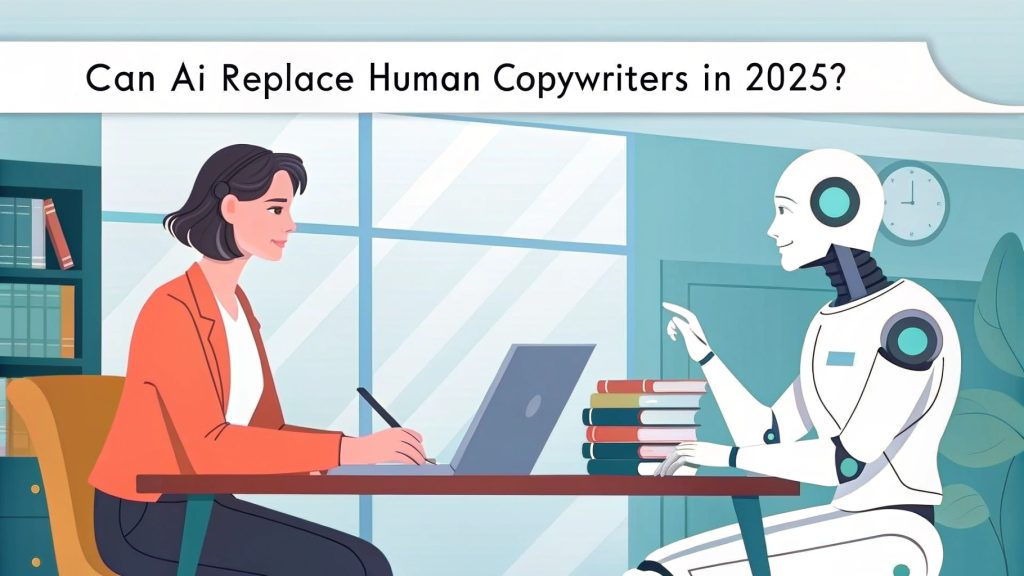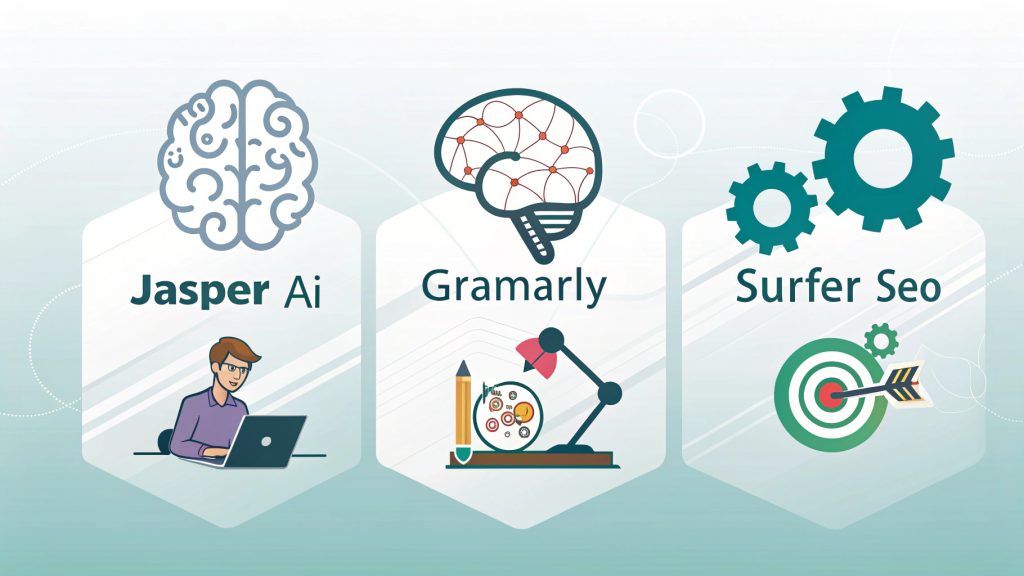With AI tools generating blog posts, ads, and social media content in seconds, a pressing question emerges: can AI replace human copywriters in 2025? AI writing tools like Jasper AI, Grammarly, and Surfer SEO have transformed content creation, boosting efficiency by 40% for 72% of creators, according to a 2023 study. But can they match the creativity, nuance, and emotional depth of human writers? This reflective article explores the pros and cons of AI copywriting, provides real-world examples, and gathers industry opinions to assess whether AI is a replacement or a collaborator. Divided into three parts, we’ll compare AI and human capabilities, analyze their impact, and explore expert perspectives. Let’s dive in!
Comparison of AI and Human Copywriters
AI copywriting tools have advanced rapidly, but how do they stack up against human copywriters? This section compares their strengths and weaknesses, highlighting where each excels.
AI Copywriting: Strengths and Limitations
AI tools like Jasper AI and Grammarly excel at speed and scalability. They generate drafts, optimize for SEO, and refine grammar instantly. For example, Jasper AI can produce a 1000-word blog post in minutes, while Grammarly ensures error-free text. However, AI struggles with originality and emotional resonance, often producing generic outputs that require human editing.
- Pros:
- Fast content generation (e.g., Jasper AI’s templates).
- SEO optimization (e.g., Surfer SEO’s keyword suggestions).
- Cost-effective for high-volume content.
- 24/7 availability without fatigue.
- Cons:
- Lacks human creativity and brand-specific tone.
- May produce repetitive or formulaic content.
- Requires human oversight for accuracy.
Human Copywriting: Strengths and Limitations
Human copywriters bring creativity, cultural nuance, and emotional depth to their work. They craft compelling narratives and adapt to unique brand voices, making them ideal for storytelling or niche markets. However, humans are slower and more expensive than AI tools.
- Pros:
- Creative storytelling and emotional engagement.
- Adapts to niche audiences and brand nuances.
- Understands context and cultural subtleties.
- Cons:
- Time-intensive writing process.
- Higher costs for professional writers.
- Subject to fatigue and creative blocks.
Comparison Table
| Aspect | AI Copywriting | Human Copywriting |
|---|---|---|
| Speed | Minutes per draft | Hours or days |
| Cost | $9–$39/month (e.g., Rytr, Jasper) | $50–$500/post |
| Creativity | Limited, template-based | Highly creative, nuanced |
| SEO Optimization | Automated (e.g., Surfer SEO) | Manual or tool-assisted |
Analysis of AI’s Role in Copywriting
Can AI truly replace human copywriters, or is it better suited as a tool? This section analyzes AI’s capabilities through examples and evaluates its impact on the copywriting industry.
Example 1: AI-Generated Blog Post
Using Jasper AI, a marketer inputs the prompt “Write a 500-word blog post on eco-friendly travel tips.” Jasper generates a post with tips like “use reusable water bottles” and “choose eco-lodges,” optimized for keywords like “sustainable travel.” However, the tone feels generic, lacking personal anecdotes or unique insights a human might add, such as a memorable travel story.
Example Output (Jasper AI): “Eco-friendly travel is vital for sustainability. Tip 1: Use reusable water bottles to reduce plastic waste. Tip 2: Stay in eco-lodges certified by green organizations…”
Human Edit: Adds a story about staying in a solar-powered lodge in Costa Rica, enhancing engagement.
Example 2: AI-Enhanced Ad Copy
A small business uses Grammarly to refine ad copy for a fitness product. The original AI-generated copy reads: “Get fit fast with our revolutionary equipment.” Grammarly suggests a more persuasive tone: “Transform your fitness routine with our cutting-edge equipment.” A human copywriter might further personalize it: “Feel stronger in weeks with our game-changing fitness gear, loved by athletes!”
AI Output (Grammarly): Clear, polished, but lacks emotional pull.
Human Touch: Adds emotional appeal and audience targeting.
Impact on the Industry
AI has disrupted copywriting by automating repetitive tasks like blog drafts or SEO optimization. Tools like Surfer SEO help creators optimize content for Google, reducing reliance on manual keyword research. However, AI’s limitations—generic outputs and lack of emotional depth—mean humans remain essential for high-stakes projects like brand campaigns or storytelling. A 2024 survey found 62% of marketers use AI as a tool, not a replacement, suggesting a hybrid approach is emerging.
Industry Opinions and Future Outlook
What do experts say about AI’s role in copywriting? This section gathers industry opinions and explores whether AI will replace human copywriters or redefine their roles in 2025.
Expert Opinions on AI Copywriting
Industry leaders have mixed views on AI’s potential. Ann Handley, a renowned copywriting expert, argues that AI lacks the “human spark” needed for compelling storytelling, emphasizing that emotional resonance is a human strength. Conversely, a 2024 HubSpot report predicts that 80% of content teams will use AI tools by 2025, with leaders like Neil Patel praising tools like Jasper AI for scaling content production. Patel notes, “AI handles the heavy lifting; humans add the soul.”
- Pro-AI View: Marketers like Patel see AI as a productivity booster, ideal for drafting and optimizing content.
- Pro-Human View: Writers like Handley stress that humans excel at crafting unique, emotionally engaging narratives.
Case Study: Hybrid Approach
A digital agency used Jasper AI to draft blog posts, Surfer SEO to optimize keywords, and human writers to add brand-specific flair. The result? A 35% increase in organic traffic and 20% faster content production. This hybrid model—AI for drafts, humans for editing—shows AI as a collaborator, not a replacement.
Hybrid Workflow: AI drafts a 1000-word post in 10 minutes; a human editor refines it in 2 hours, adding anecdotes and brand voice.
Future Outlook for 2025
In 2025, AI will likely dominate repetitive tasks like SEO optimization and basic content drafting, but human copywriters will remain vital for creative, high-value work. Tools like Jasper AI, Grammarly, and Surfer SEO will evolve, offering better personalization, but they won’t replicate human intuition or cultural nuance. The industry is shifting toward a collaborative model where AI handles efficiency and humans focus on creativity. For example, AI can generate 80% of a blog post, but humans will refine the final 20% for impact.
Challenges remain: AI’s reliance on training data can lead to ethical concerns, like unintentional plagiarism or biased outputs. Human oversight ensures ethical and accurate content. As a 2025 forecast by Content Marketing Institute suggests, “AI will augment, not replace, human creativity.”
Tool Recommendations
To leverage AI in copywriting, try these tools:
- Jasper AI: For drafting blog posts and ad copy.
- Grammarly: For polishing and refining text.
- Surfer SEO: For optimizing content for Google.
In 2025, AI won’t fully replace human copywriters but will redefine their roles. Tools like Jasper AI, Grammarly, and Surfer SEO excel at speed and optimization, but humans bring creativity, nuance, and emotional depth. A hybrid approach—using AI for drafts and humans for refinement—offers the best results, as seen in real-world examples and industry trends. Whether you’re a marketer or writer, embracing AI as a collaborator can boost productivity without sacrificing quality.
Ready to enhance your copywriting? Sign up for our newsletter for expert tips and get our free eBook, “AI vs. Human Copywriting: The 2025 Guide.” Join Now. Explore more in our guide on Top AI Tools for Content Creation.


